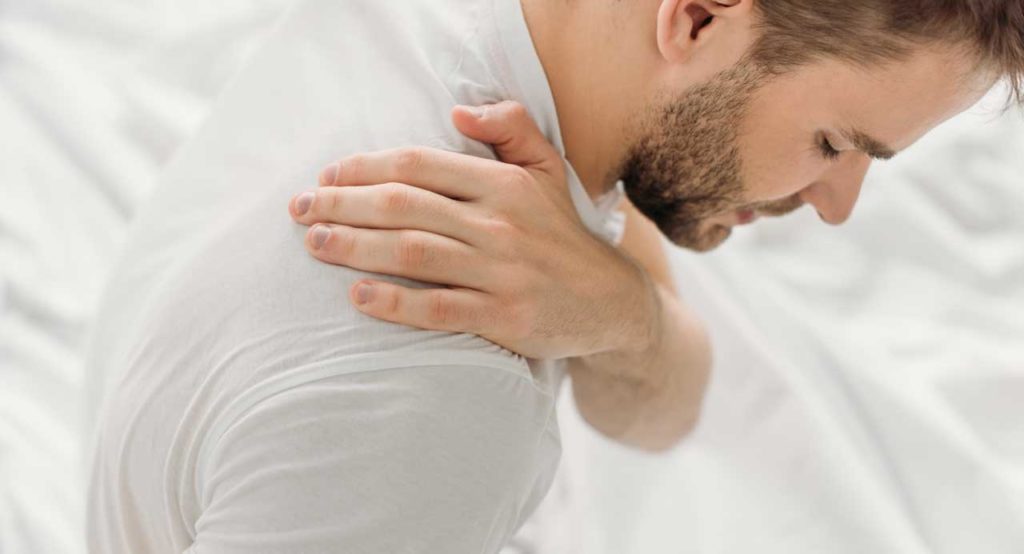
The shoulder joint has the widest range of movement in the body, allowing us to reach objects. It’s a ball and socket joint, where the cup is formed by the glenoid part of the shoulder blade and the ball is formed by the head of the humerus (arm bone). But the cup is very shallow – almost flat and this makes it easy for the ball to come out. The stability of the joint is provided by the labrum, capsule and ligaments of the shoulder. The labrum is a rim of fibrous tissue attached to the periphery of the cup (glenoid). The labrum deepens the cup and also behaves like a bumper against joint displacement.
The capsule and ligaments of the shoulder are attached to the labrum, and thus encircle the head of the humerus and prevent the head of humerus from slipping out of the joint. Arthroscopy of the shoulder – a type of keyhole surgery – is performed using three small openings (1 cm) called portals, in the front and back of the shoulder. Delicate instruments and telescopes are passed into the joint, and the inside of the joint is visualized on a TV monitor. Most common conditions can be treated with arthroscopy.
Common shoulder conditions
Tendinitis
A tendon is a cord-like tissue that connects muscles with the bone. Inflammation of rotator cuff tendons and biceps tendons due to repetitive activity or overuse is a common cause of shoulder pain.
Bursitis
A bursa is a fluid-filled sac, which lubricates the movements between the tendons and bones around the shoulder. Any inflammation of this bursal tissue could also result in pain.
Rotator cuff tears
A torn rotator cuff could produce pain on the elevation of the shoulder and on lying on the same side. An ultrasound scan or an MRI will clearly define the tear.
Labral tear
A labral tear occurring in the front part of the shoulder is called Bankart’s lesion, which is found in dislocating shoulders. It gives rise to pain as well as fear of impending dislocation in certain arm positions. A tear of the labrum in the superior portion of the labrum (SLAP lesion) is also a significant cause of pain in sportspersons participating in throwing activities. It results in pain in certain positions of the arm as well as clicking sounds.
Frozen shoulder
Pain along with stiffness is characteristic of this condition. The age group affected is above 40 years.
AC joint arthritis
The joint between the outer end of collar bone and the tip of the shoulder blade(acromio-clavicular joint) could get damaged due to injury or arthritis and give rise to pain.
Biceps tendonitis
Biceps are a powerful muscle present in the front of the arm. Its tendon originates from inside the joint. If the tendon is damaged by repetitive use of the arm, it can lead to pain in the shoulder.
Referred pains
Many times shoulder pain originates from compression of nerves in the spinal cord in the neck region due to a disc prolapse or cervical spondylosis. Clinical examination and investigations will differentiate between these two. Intrathoracic and Intraabdominal conditions also produce shoulder pain due to overlapping nerve supply.
SLAP Lesions
The term SLAP stands for Superior Labrum Anterior-Posterior. This refers to the damage or tear of labrum of the superior part of the shoulder joint. Its diagnosis and treatment is by arthroscopy only.
This lesion is commonly seen in sportspersons involved in throwing and overhead sports (volleyball, baseball).